Whether you’re breakfasting al fresco, relaxing by the pool or dining under the stars, there is a style of outdoor furniture to suit your needs. Here’s what you should consider and where you can shop the style
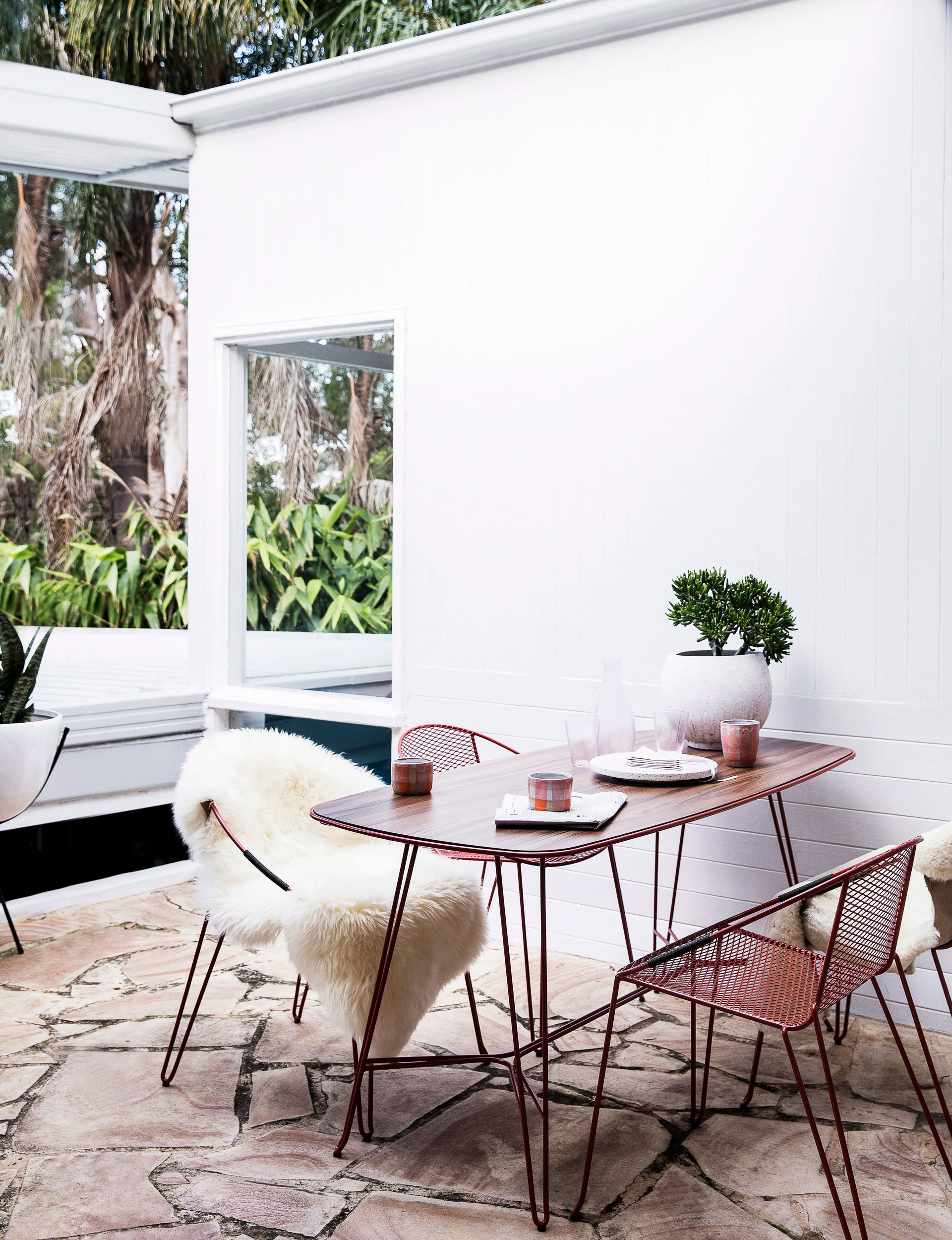
11 questions you need to ask yourself when choosing outdoor furniture
It’s safe to say we Kiwis are fans of outdoor living. We tend to design our houses to be as open to the outside as possible, and our decks and terraces are increasingly functioning as outdoor rooms that can be used year-round.
It makes sense to put as much effort into furnishing these spaces as you would a living room, right? Actually, choosing outdoor furniture is a more complicated process as it needs to withstand exposure to sun, rain and cold, as well as the wear and tear of being dragged around the garden. Bearing this in mind, it’s best to think about what your outdoor-furniture needs are before you hit the shops.
1. How comfortable is it?
If you want to enjoy your outdoor spaces for as many hours as possible this summer, focus on choosing comfortable seating. Start your research by checking out what your friends and family have tried and tested, and look in magazines and online. Then it’s time to do some legwork and try the outdoor furniture you like in-store.
Make a list of pertinent questions such as: is it the right height? Can you (or older friends) get up easily after sitting down? Does it have good back and backside support? Could you sit on these chairs for hours at a stretch? Whether you opt for a sofa, beanbag, lounger, dining chairs or a combination of all of the above, you won’t regret putting some time and thought into your choice.
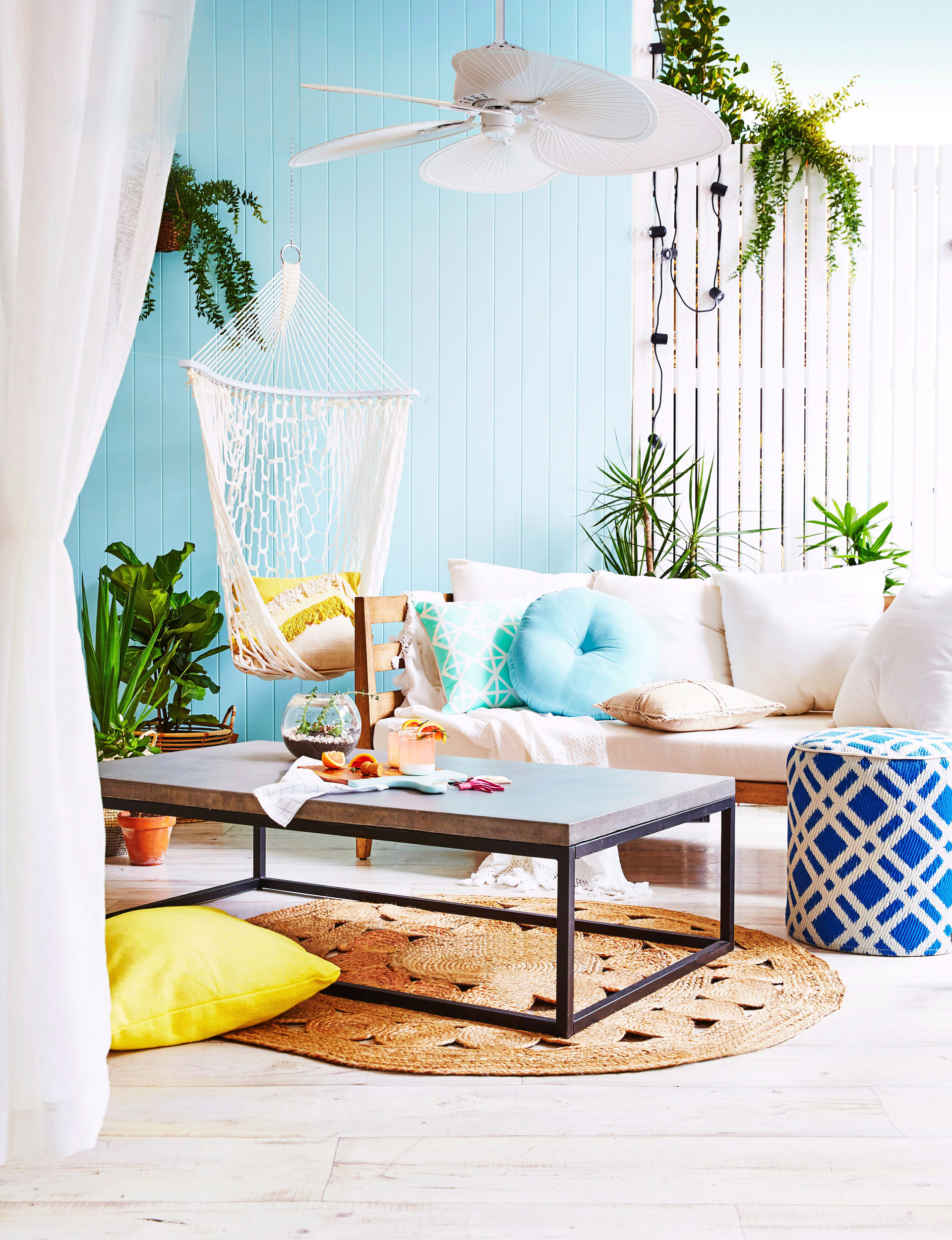
2. Are you sitting or lounging?
The range of outdoor furniture available these days is so huge it will save you a lot of time if you think about the main purpose of your outdoor room before you go shopping, especially if space is limited. For instance, if you love cooking and eating with friends, a table and chairs plus a portable gas heater is probably a good choice. But if you’re more into sitting around with some drinks and a platter, rattan sofas might be the way to go. Whatever you choose, make sure you don’t go overboard – a spacious look is easier on the eye and more relaxing to be in than a cluttered space.
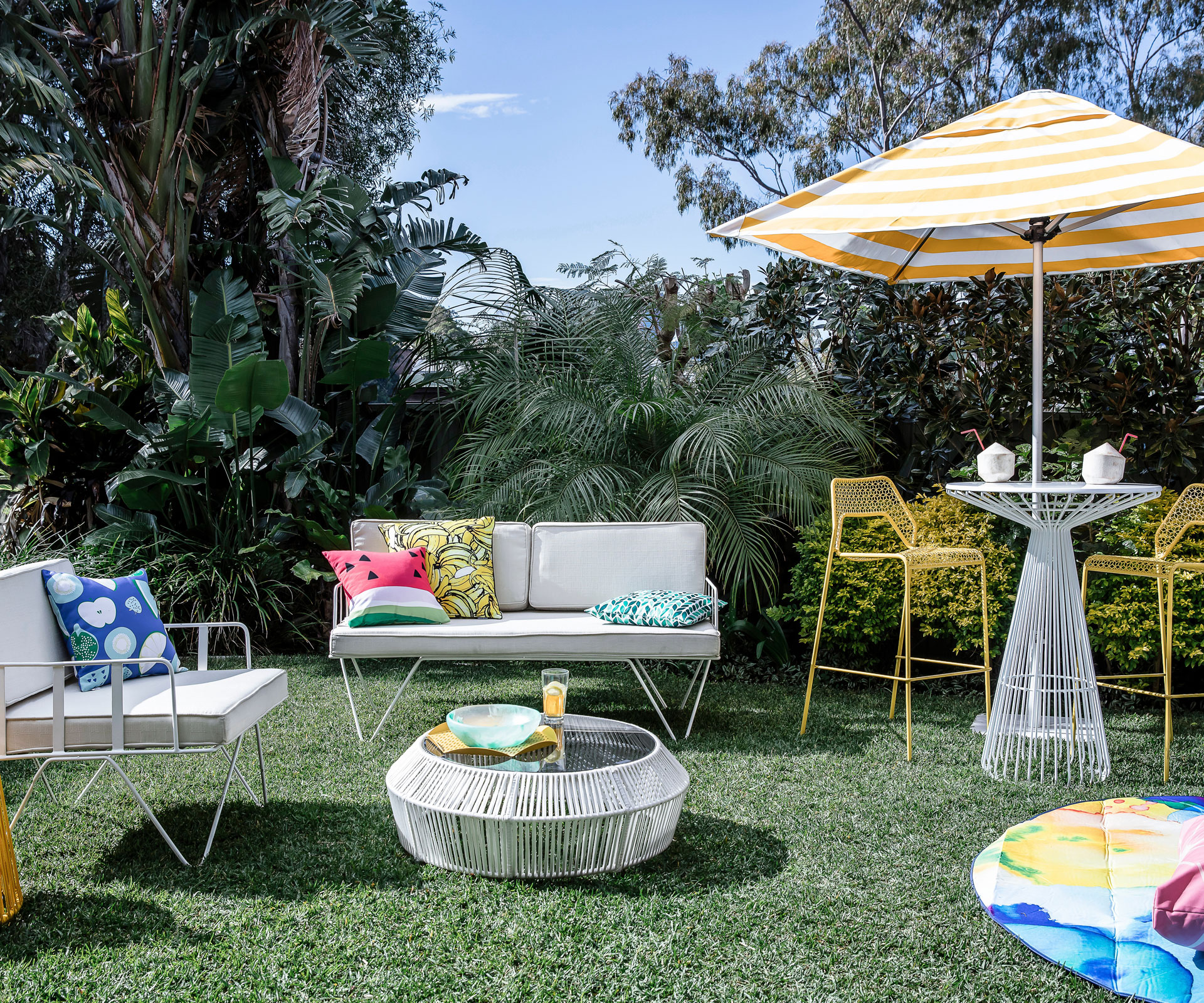
3. Will it fit?
Get the measuring tape out and calculate exactly how much space you have to play with. Then measure the dimensions of the furniture you are interested in and work out the space needed to comfortably move between each item, push chairs out from the table and so forth. No one enjoys a room where there’s no space to breathe, whether it’s inside or out.
4. Which materials?
Key factors to consider when selecting outdoor furniture are durability, portability and maintenance. Lightweight, low-maintenance chairs made of aluminium, resin or plastic can be moved and stored easily. They also won’t need a lot of weather protection. A steel or solid timber table, on the other hand, won’t be as easy to move around and will need to be weatherproofed regularly, but you may feel the longevity and solidity of such a piece is more important than its flexibility of use. To avoid a busy look in a small garden, don’t buy outdoor furniture that mixes too many materials.
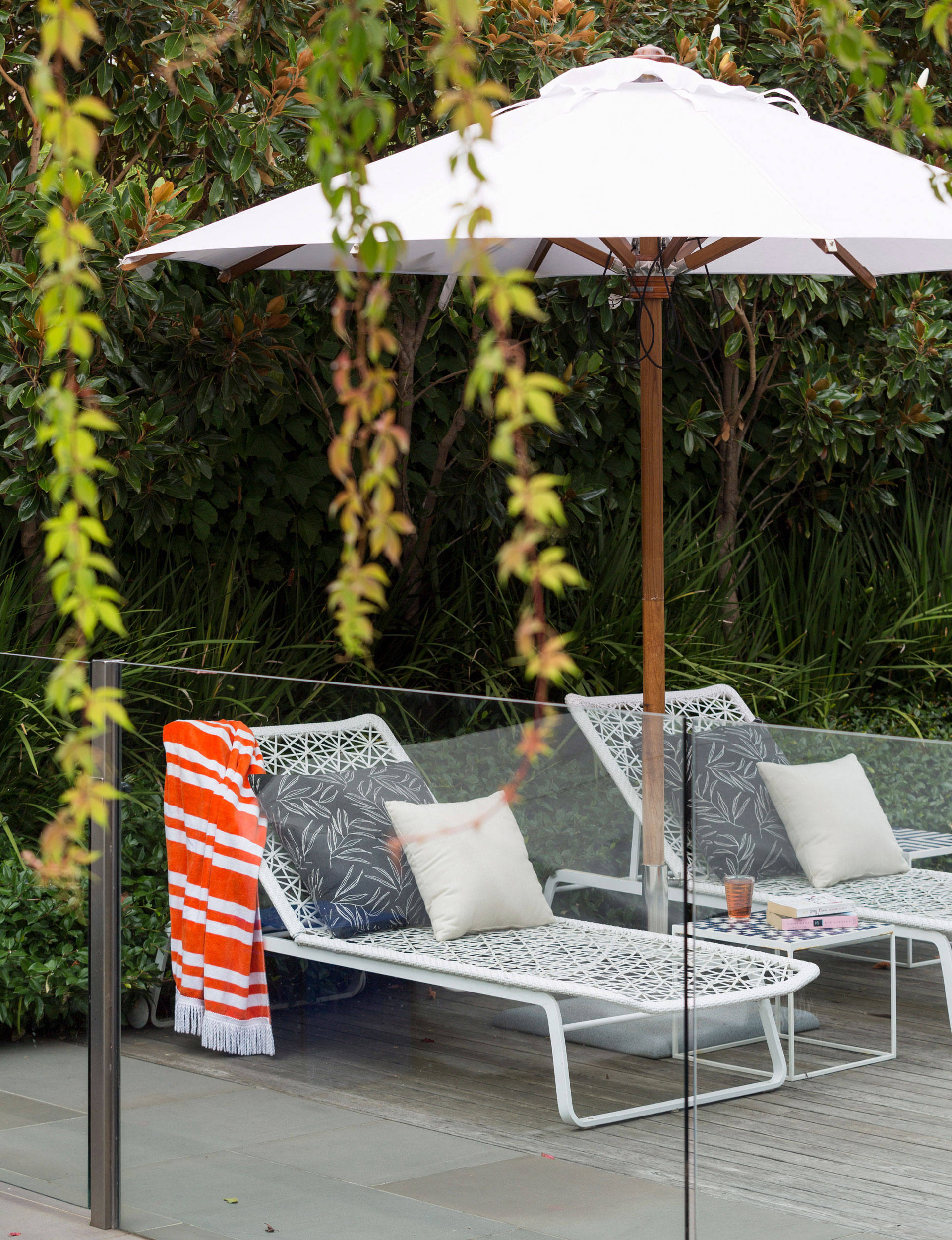
6. Are there any imprefections?
Make sure you thoroughly inspect outdoor furniture for flaws that may not be obvious at first glance. Are there cracks in the welds and paint finish? Has the manufacturer used stainless-steel screws? Is the timber rough or smoothly sanded? What’s the frame made of? Sit down on chairs to check for wobbly legs and whether they flex under your weight. A solidly built chair will usually have cross bracing to make it stronger.
7. What’s the quality like?
Our gardens tend to be smaller these days, which means every element plays a key role. In tiny outdoor areas furniture often occupies the same amount of space as plants, which means both will have a significant visual impact. Choosing the best-quality furniture you can afford is therefore a no-brainer, especially if you like to spend lots of time outside. Buying in end-of-season sales or at secondhand stores can help reduce costs.
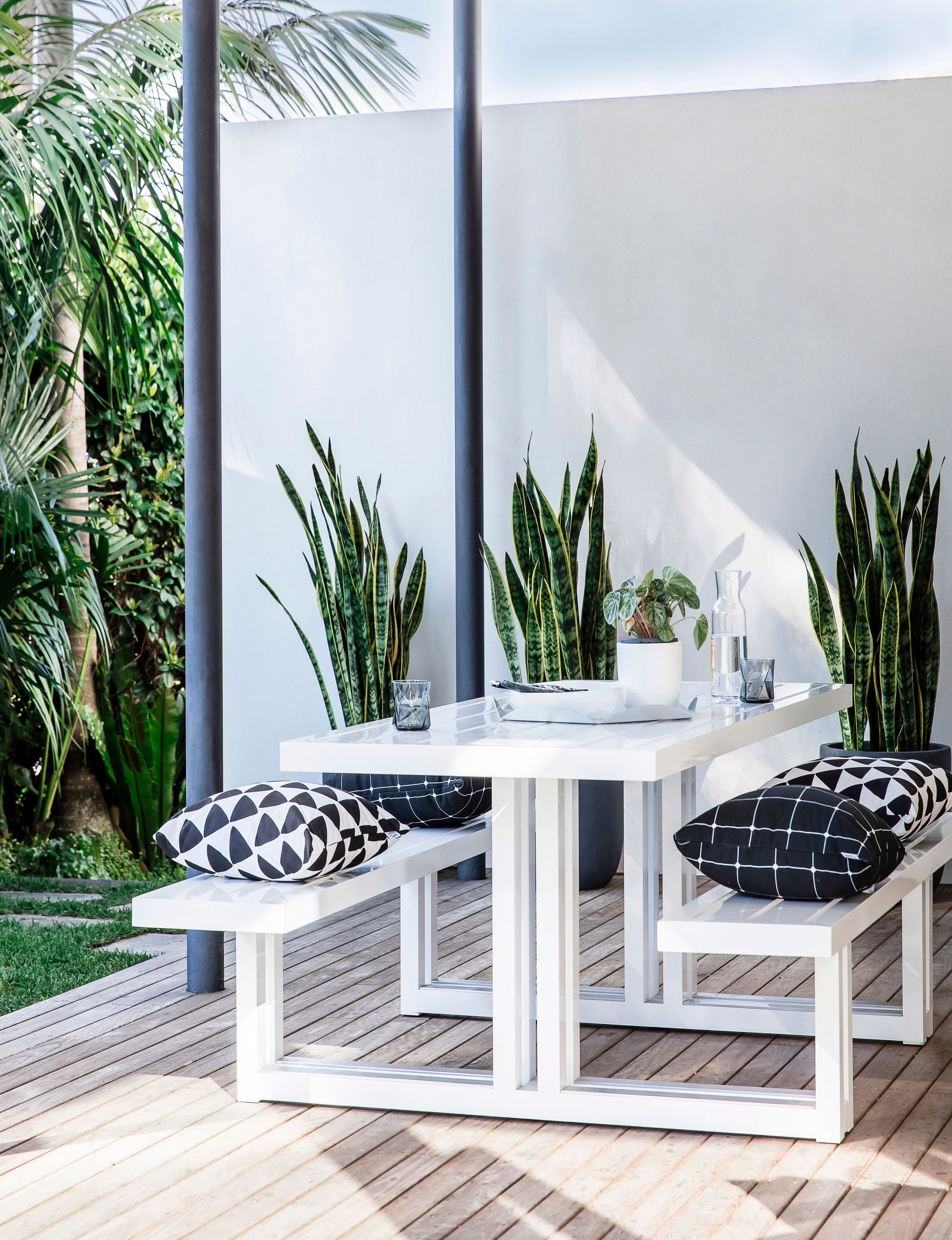
8. How can I soften the space?
Good-quality cushions and squabs are essential for maximising outdoor comfort but they can also add a more sumptuous feel to the space overall. When there’s less room for plants to soften the hard surfaces of your outdoor living area, let attractive soft furnishings, shade sails, rugs and umbrellas do the job.
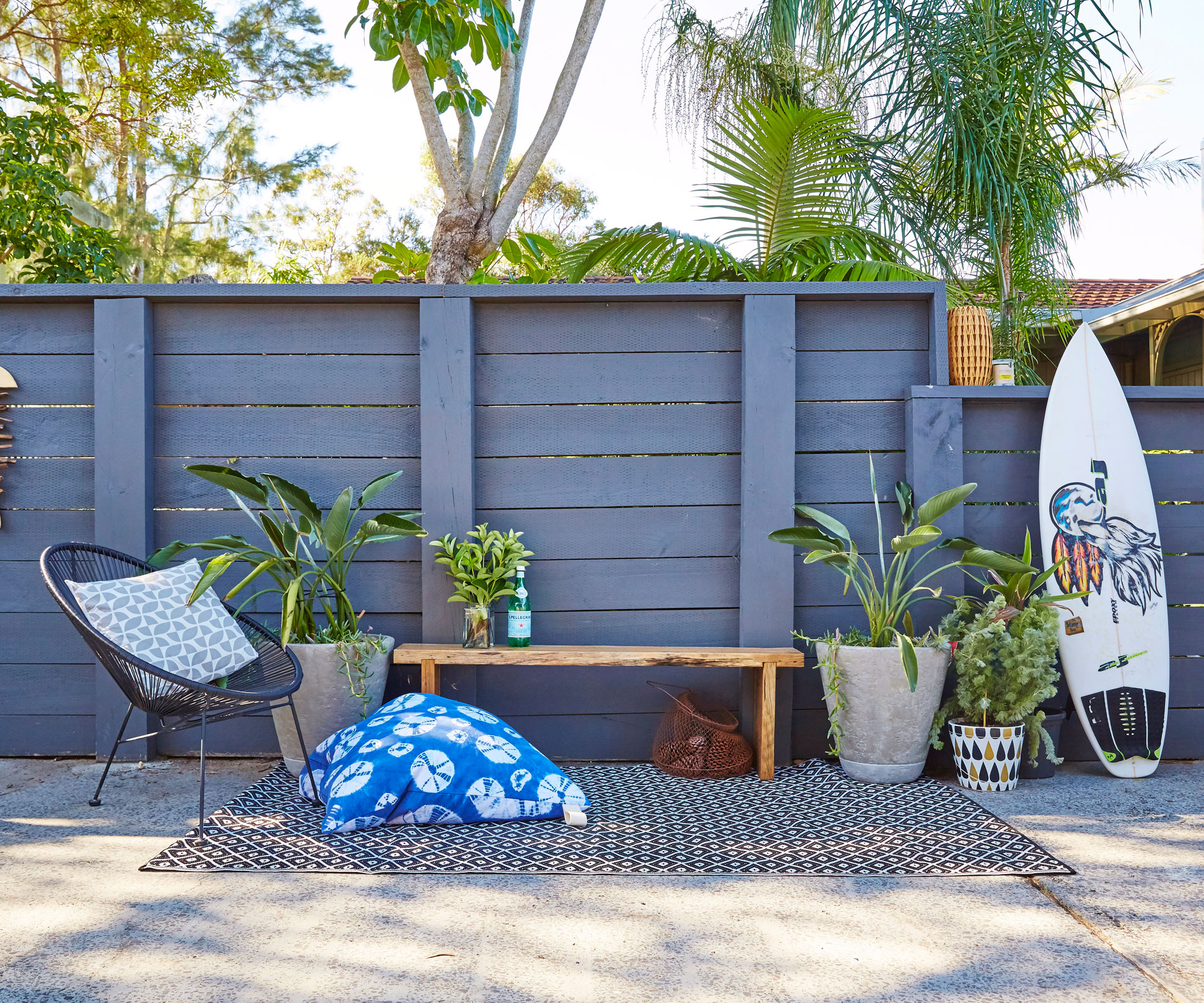
9. What kind of fabric is this?
Always opt for fabrics that have been designed for indoor and outdoor use, ideally all-weather materials that are fade- and UV-resistant. Spills are all too common when entertaining, so it’s better to go for cushions that can be unzipped so they can be washed or repaired.
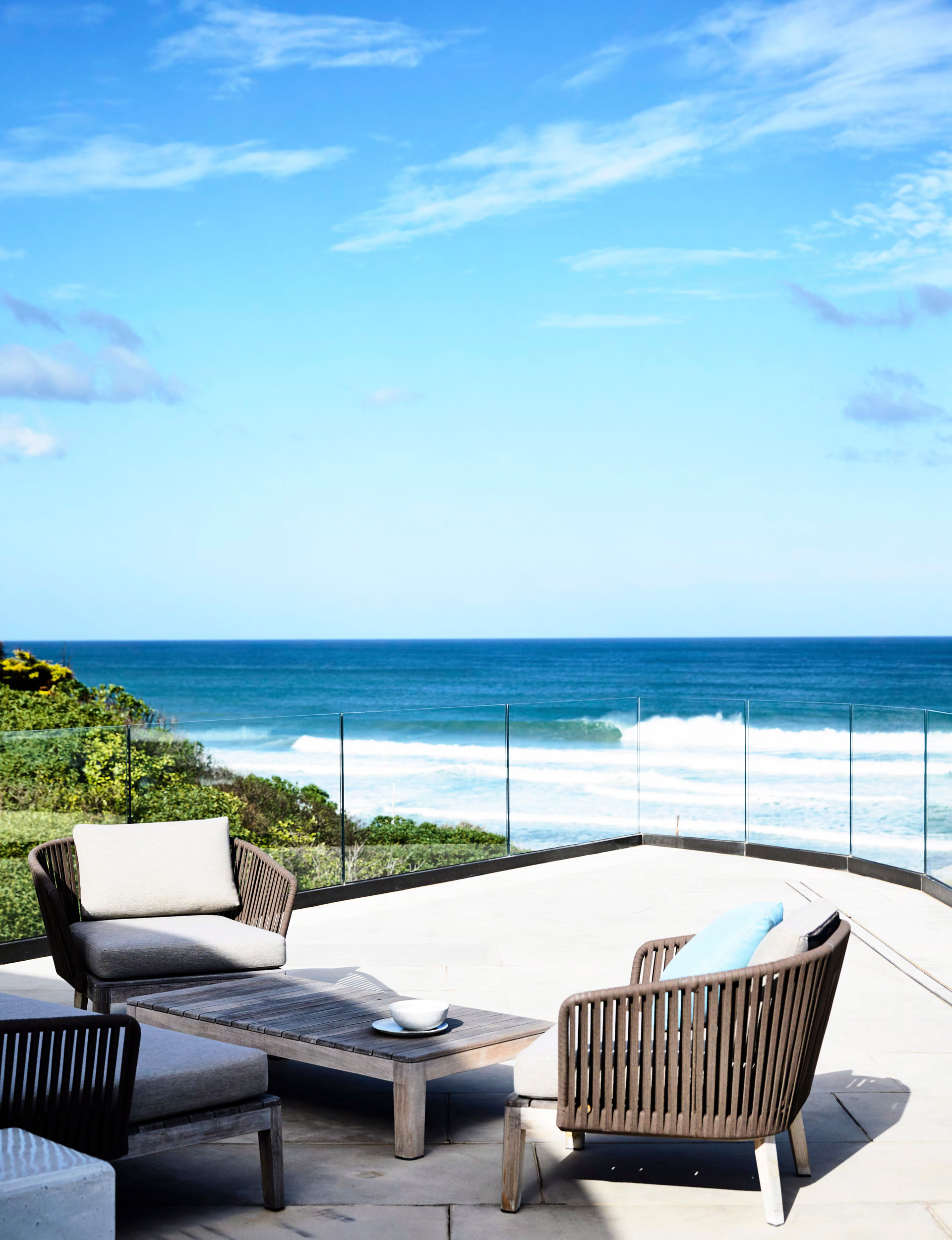
10. Does it need a winter cover?
If you want to leave your furniture outside all year, count on some degree of deterioration; how much depends on the climate. If you have the storage space, you might decide to cover your outdoor furniture during winter, or store it, which will extend its life and give you a wider choice of materials. Remember that outdoor furniture and cushions can take up lots of room.
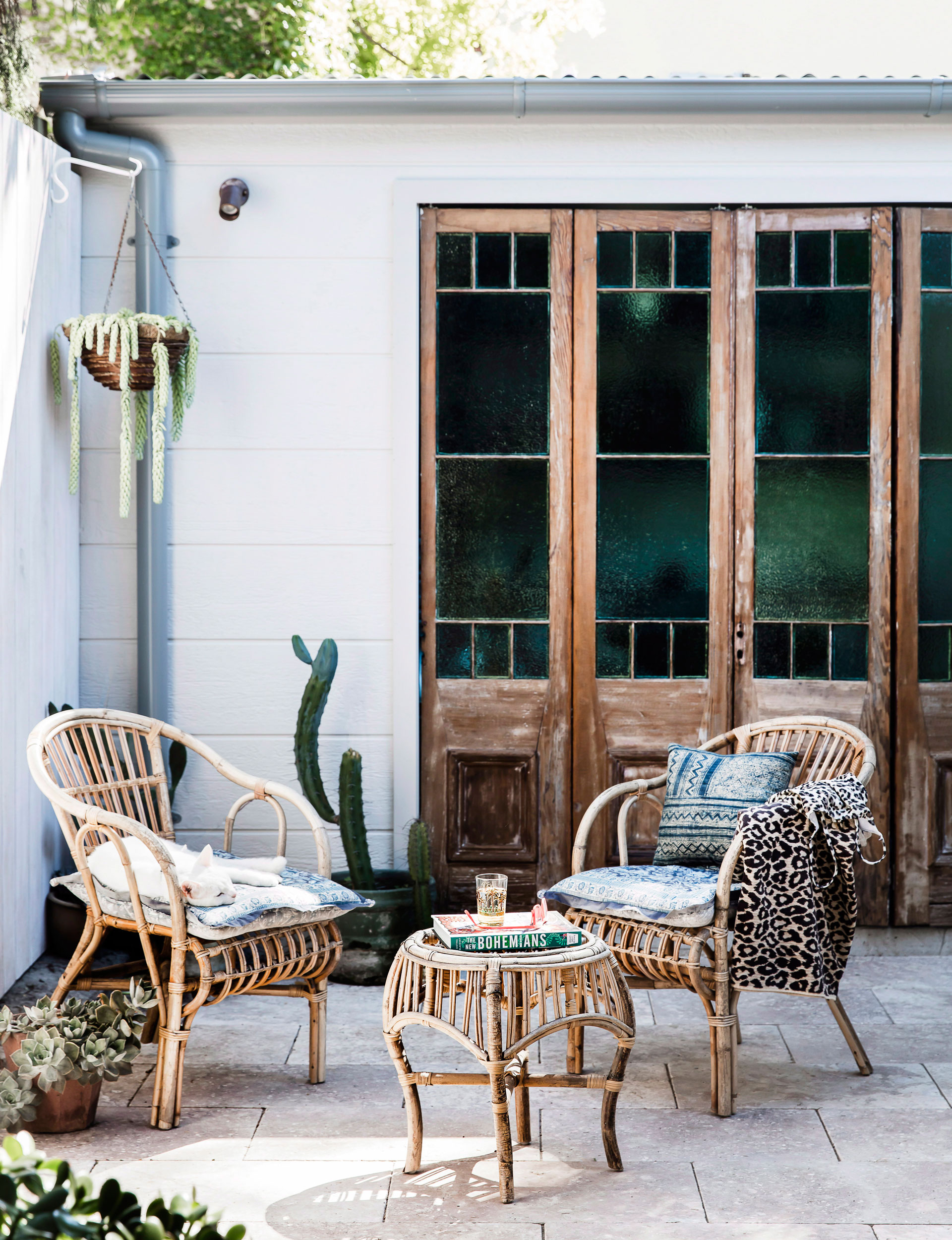
11. What’s the weather like?
Taking your home’s specific weather conditions into consideration before you buy outdoor furniture might sound like overkill but it makes sense. For instance, if your balcony is very windy, there’s no point in buying lightweight aluminium chairs that can take flight at any moment. A sunny patio that reaches very hot temperatures may make timber furniture crack, and constant rain can cause mould and dampness in fabric and rattan.
1/6
1 Ibiza teak outdoor sofa, $5995, from Design Warehouse. 2 Barcelona lounge setting, POA, from Domo. 3 Brix lounge setting, POA, from Domo. 4 Adelphi modular three-piece set, $2699, from Freedom. 5 Canzo four-piece lounge setting, $1699, from Mitre 10. 6 Nero four-piece lounge set, $2499, from Mitre 10.
2/6
1 Pop low seat, $990, from Citta. 2 Skin chair by Calligaris, $259, from Dawson & Co. 3 Retro armchair, $625, from Indie Home Collective. 4 The Urban Chair by Feelgood Designs, $592, from Backhouse. 5 Devonport chair, $329, from Ico Traders. 6 Basket chair by Feelgood Designs, $567, from Backhouse. 7 Adelaide chair, $769, from BoConcept. 8 Helena armchair, $699, from Dawson & Co. 9 Skarpo armchair, $189, from Shut The Front Door.
3/6
1 Sway hammock chair, $79.90, from Citta. 2 Coco egg lounger, $1999, from Danske Møbler. 3 Hanging rattan chair, $600, from Alex & Corban. 4 Nestrest hanging lounger, POA, from Domo. 5 Tosca daybed, POA, from Dawson & Co.
4/6
1 Pacific extension table, $5299, from Dawson & Co. 2 Adelphi nine-piece set, $2499, from Freedom. 3 Hayman dining table, $3269, from Dawson & Co. 4 Adelphi dining set, $1999, from Freedom. 5 Havelock concrete table, $1899, from Freedom. 6 Carmel three-piece setting, $599, from Mitre 10.
5/6
1 Ayla cushion, $39.95, from Freedom. 2 Jelli pouf, POA, from Design Warehouse. 3 Clifton outdoor rug, $199, from Freedom. 4 Round outdoor cushion, $8, from Kmart. 5 Deluxe beanbag, $99.99, from EziBuy.
6/6
1 Wicker relaxing chair, $299, from Mitre 10. 2 Siena bench seat, $499, from Mitre 10. 3 San Diego two-seater, $4825, from Dawson & Co. 4 Tango recliner, POA, from Domo. 5 Yosemite bench, $499, from Freedom. 6 Siena three-piece pod setting, $1299, from Mitre 10. 7 Sunai chair, POA, from Design Warehouse.
Words by: Carol Bucknell.
EXPERT PROJECTS

Create the home of your dreams with Shop Your Home and Garden
SHOP NOW

















